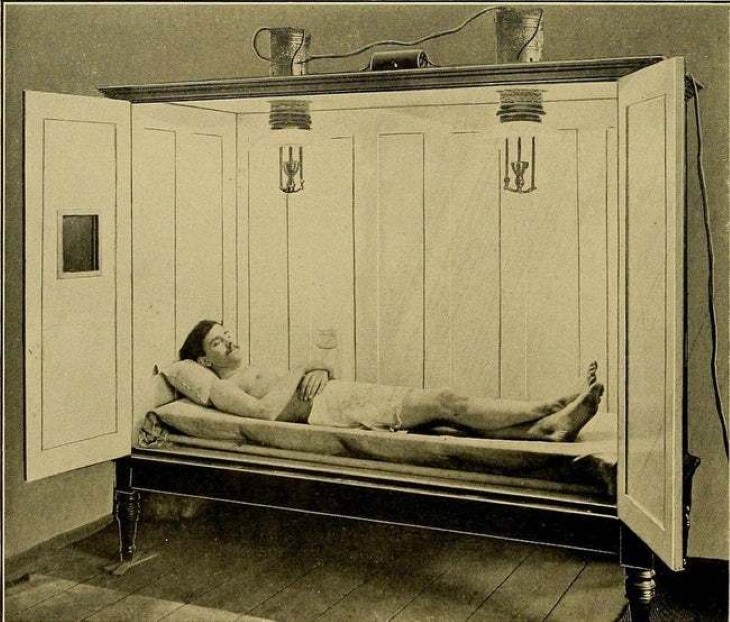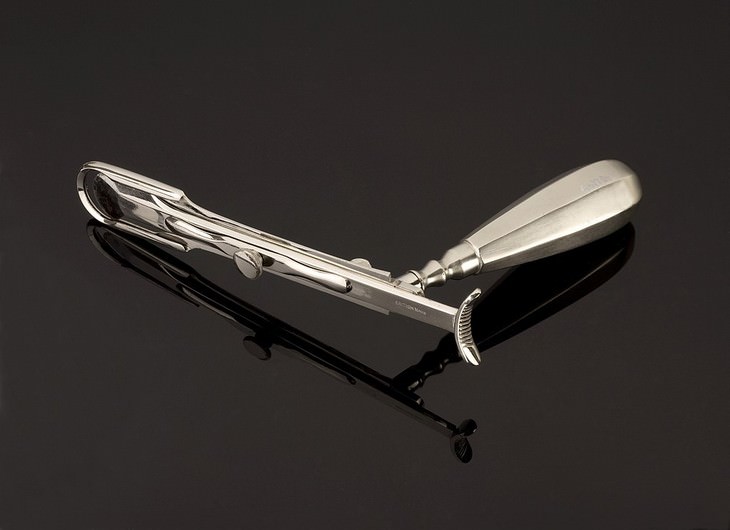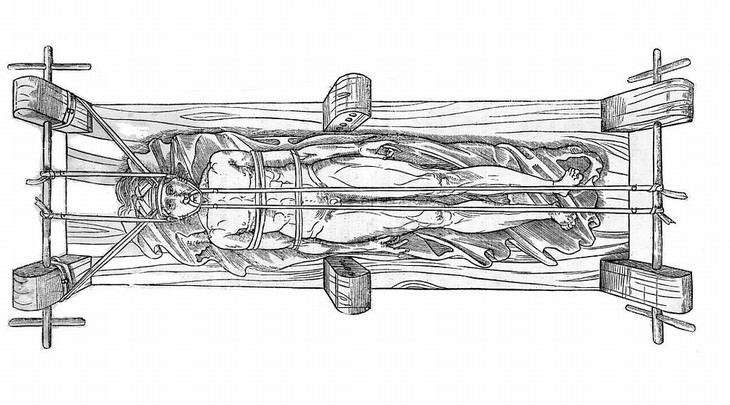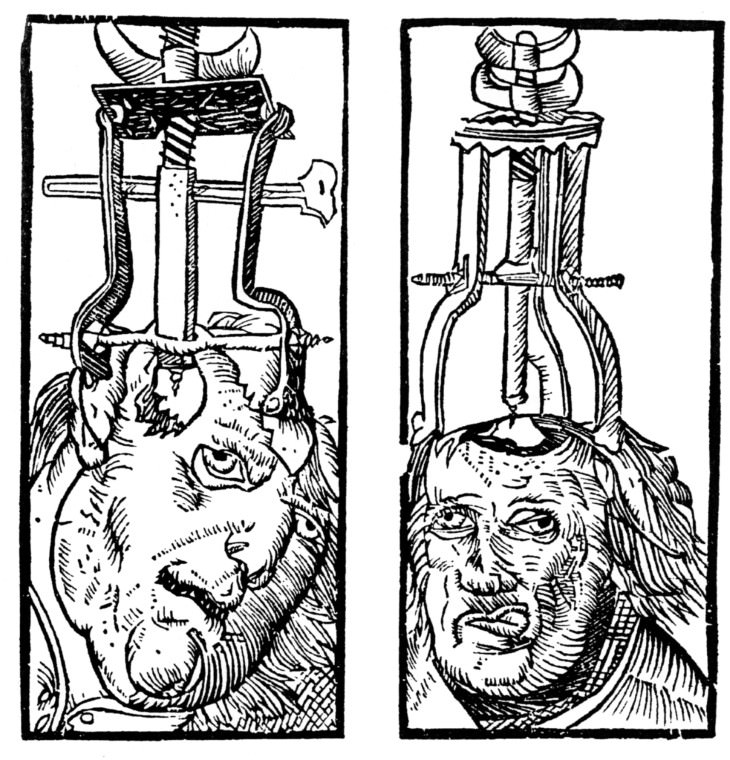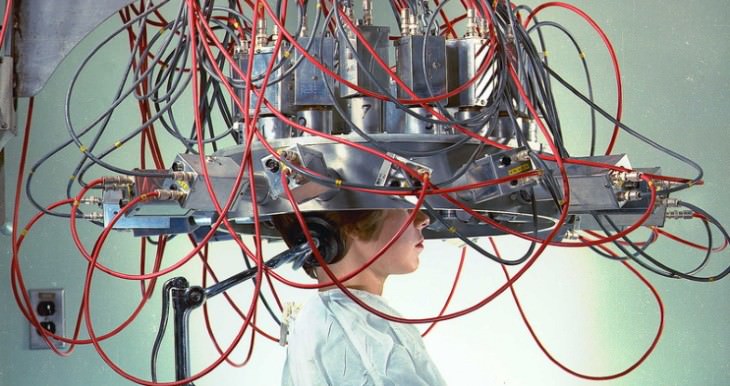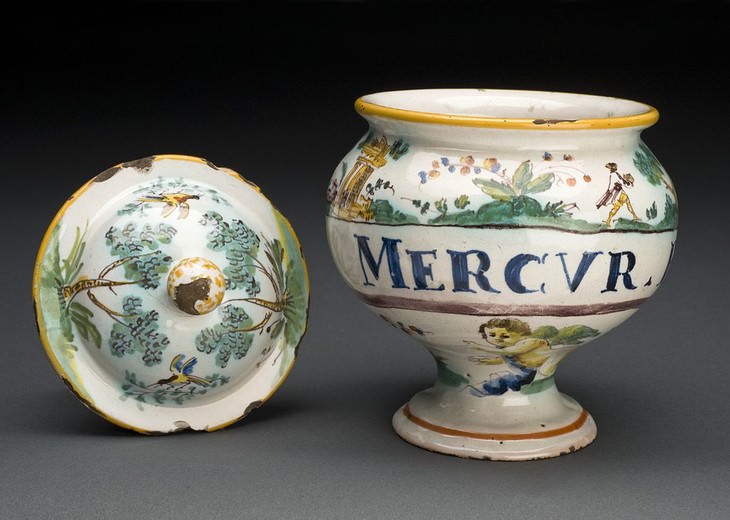1. Electric Baths
Source: Archive Book Images/ Flickr
Did you think we’d start with some medieval torture device-looking contraption? Not at all, those will come later. Instead, let’s begin our list with a more recent invention. With the discovery of electricity, the first medical electric devices were inevitably born, the so-called electric baths, which were different devices that used electric currents to charge the body with electricity.
One of the first people experimenting with electric baths was actually Benjamin Franklin, after whom the process of essentially electrifying the person came to be called Franklinization. These first prototypes of electric baths appeared in the mid-18th century and reached their peak of popularity in the 19th century, but by the 20th century, they were replaced by light therapy devices, which looked like rooms or boxes filled with lamps that emitted different kinds of light, believed to be beneficial for one’s physical and mental health.
Essentially, these more modern versions of electric baths were early tanning beds, but they could supposedly cure many chronic health issues, as well as anxiety and depression. Today, we know that even modern tanning beds are very dangerous and may cause skin cancer, but these earlier versions were even more unsafe and often caused severe burns, damaged muscles, and other life-threatening conditions.
2. Tonsil Guillotine
This contraption is as terrifying as it sounds and does exactly what the name suggests. Tonsil Guillotines were long metal devices equipped with a sharp blade at their end which were used to perform tonsillectomies, a routine procedure for treating chronic tonsil infections.
These creepy devices were used from the 18th century, way before proper anesthesia and antibiotics, and persevered all the way until the 1970s, when they finally fell out of favor. This torturous-looking instrument let the doctor reach a patient’s tonsils, pierce the abscess, and get rid of the inflamed tissue all in one go and without the risk of being bitten by the patient.
3. Hippocratic Bench
Also known as the scamnum, the Hippocratic Bench was, unsurprisingly, Hippocrates’ invention, which used traction to reset broken bones and correct the curvature of the spine. The famous Greek physician used this device to treat spinal issues and to straighten overlapping fractures.
The device itself is a wooden bench with ropes and winches attached at its corners. The patient would be placed on the device and the ropes would be tied around his limbs, neck, and waist, depending on the area that required treatment. Slowly, the ropes would be tightened using the winches, pulling and increasing the distance between the body parts.
Does this device remind you of a Medieval torture rack? This eerie resemblance is absolutely warranted, as the rack was actually “inspired” by the Hippocratic Bench, as were many modern orthopedic devices that work with skeletal traction, so in a way, this technique lives on today.
4. Trepanation Devices
Source: Peter Treveris
Speaking of creepy ancient techniques that live on to this day, enter trepanation, one of the first-ever recorded medical procedures in human history. Trepanations were executed for millennia, with both Greek and Aztec healers dabbling with the concept of drilling holes in human skulls.
Trepanations were believed to “treat” several physical and mental issues or were a part of religious practice. The treatment was used to treat anything from epilepsy to headaches, abscesses and mental illness, or simply as a way to release the evil spirits stuck in a person’s head.
Not all trepanations were a failure either, with some ancient Peruvian remains suggesting that they used trepanations to clean up infected tissues after severe head injuries with patients surviving the treatment. As you might imagine, though, their Medieval counterparts like those poor souls in the images above were not so fortunate.
Surprisingly enough, trepanations are among the procedures carried on to this day, with neurosurgeons resorting to this technique when they need to access the brain to cut out brain tumors.
5. Pre-PET Headgear
While this early version of a PET scanner is not necessarily outdated or harmful per se, it is a very strange looking device in a sci-fi kind of way nevertheless. This contraption was the predecessor of a PET scan built in 1961 to assist early attempts at devising a non-invasive way of detecting brain tumors at the Brookhaven National Laboratory. This work resulted in a real breakthrough in neuroscience, where today we are able to study the brain and its activity on humans in action without any harm to the subjects.
6. Mercury
Mercury is not a device per se, but it’s still a tool people have used for thousands of years to “cure” illness. Needless to say, mercury, as well as arsenic and lead are all extremely toxic for humans, but our ancestors had no idea this was the case.
Mercury ointments were a popular treatment among ancient Persians and Greeks, and ancient Chinese alchemists were convinced that mercury could extend one’s lifespan or even grant eternal life or the power to walk on water. Famously, Chinese Emperor Qin Shi Huang died of mercury poisoning after taking one of such immortality potions. Centuries later, European medicine makers sold mercury pills as a treatment for STDs, such as syphilis.
In the image above, you can see an 18th-century jar made to hold these mercury pills. Needless to say, the treatment was unsuccessful at treating the condition and most of these patients died of liver and kidney failure in terrible pain and suffering.
Still, this practice continued until the early 20th century, and reportedly, even Paul Gaugin, the famous Impressionist artist died of mercury poisoning, which he took to treat syphilis. Arsenic, lead, and more recently, asbestos, have similar sad stories of misconceived healthful or beautifying benefits.
Related Articles:

